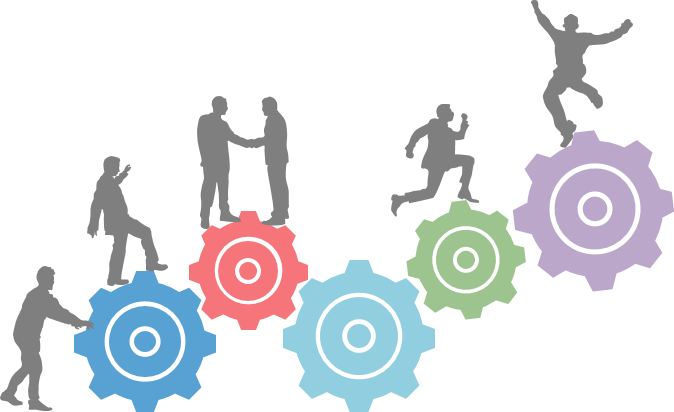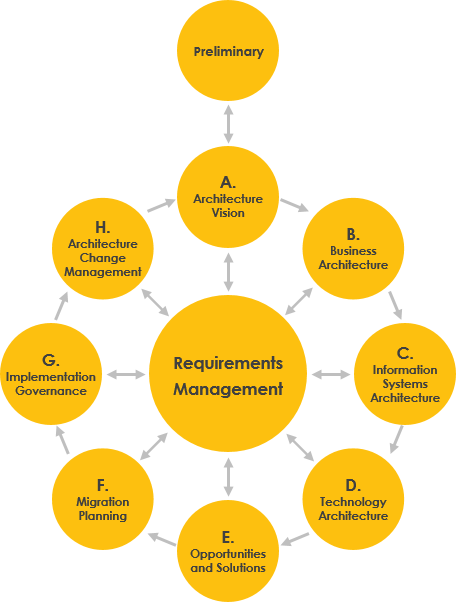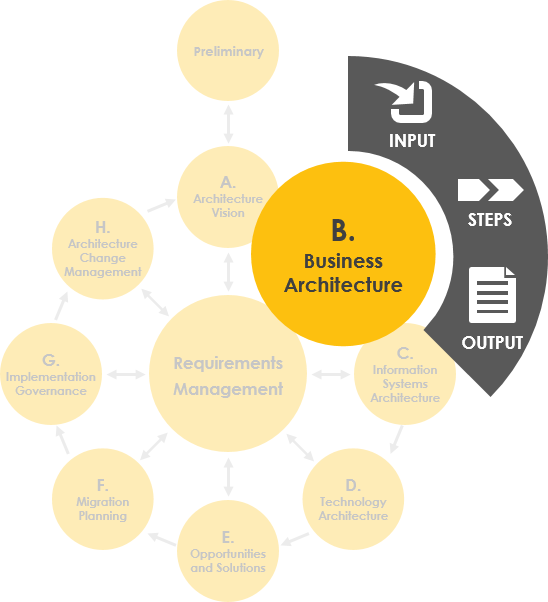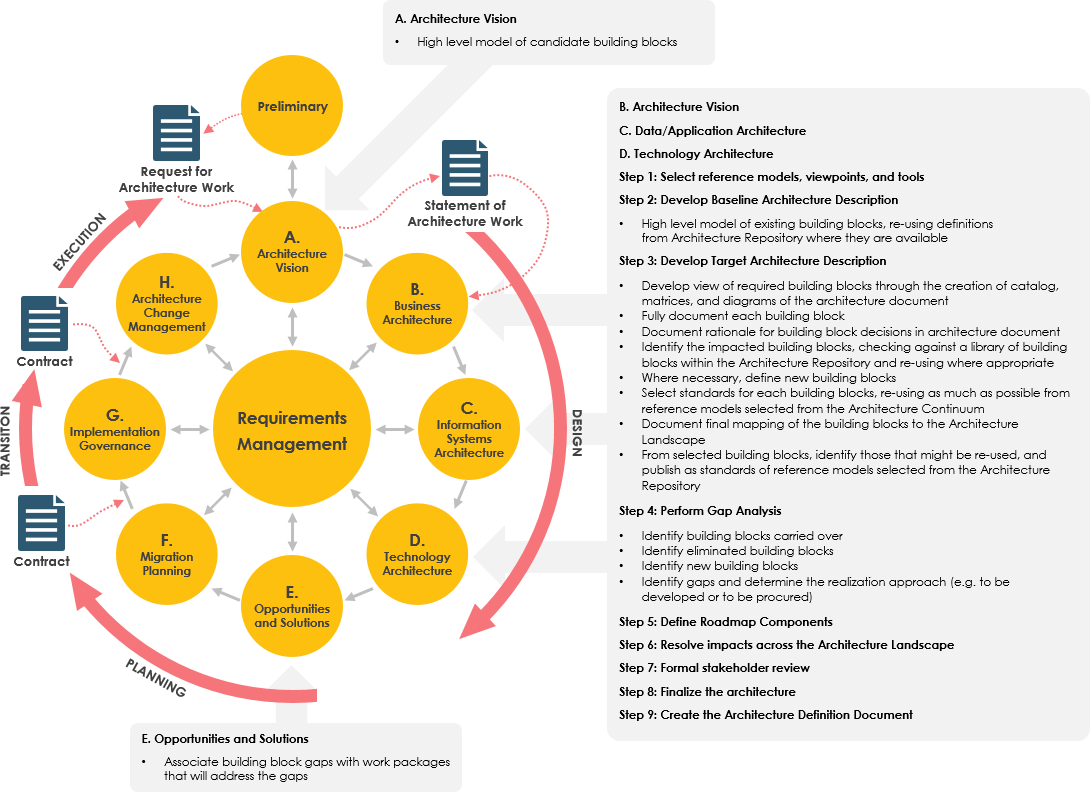Introduction to TOGAF ADM
The TOGAF Architecture Development Method (ADM) is a comprehensive framework designed to guide the development and management of enterprise architectures. It provides a structured approach to align business goals with IT strategies, ensuring that the architecture meets the evolving needs of an organization.

Key Features of TOGAF ADM

Structured Approach
The ADM offers a step-by-step process that covers all phases of architecture development, from preliminary planning to implementation governance. This structured approach helps organizations systematically develop and manage their enterprise architecture.

Deliverables and Artifacts
The ADM process includes the creation of various deliverables and artifacts, such as architecture views, catalogs, matrices, and diagrams. These artifacts are essential for documenting and communicating the architecture to stakeholders.
Iterative Process
The development of architecture views in TOGAF ADM is iterative, progressing from business to technology and from high-level overviews to detailed specifics. This iterative approach ensures continuous alignment with stakeholder concerns and requirements.
Customization and Flexibility
One of the strengths of TOGAF ADM is its adaptability. Organizations can tailor the ADM process to fit their specific needs, whether by simplifying steps or combining phases to streamline the architecture development process.
Supporting Tools
TOGAF ADM is supported by a variety of tools that facilitate the creation and management of architecture artifacts. These tools include diagramming software, repositories, and modeling languages like ArchiMate, which complement the ADM process.
Evaluating the TOGAF Guide-Through Process
Step-by-Step Guidance
The Guide-Through Process offers comprehensive, easy-to-follow instructions that guide users through each phase of the ADM. This structured approach ensures that all necessary steps are covered, from preliminary planning to implementation governance, making the architecture development process more manageable and less daunting.

Deliverable Composer
One of the standout features of the Guide-Through Process is the Deliverable Composer. This tool automates the generation of ADM deliverables, ensuring that all required documentation is produced accurately and consistently. By simplifying the creation of deliverables, the Guide-Through Process helps teams focus on strategic tasks rather than getting bogged down in documentation.
Real-Life Examples and Expert Guides
The tool provides real-life examples and expert guides to help users understand and apply the ADM principles effectively. These resources serve as practical references, offering insights into how to tackle common challenges and best practices for successful architecture development.
Customization Options
The Guide-Through Process allows for customization, enabling organizations to tailor the ADM steps to fit their specific needs. This flexibility ensures that the architecture development process aligns with the unique requirements and goals of the organization, making it a versatile tool for various enterprise contexts.
Cutting-Edge Modeling Tools
Visual Paradigm’s Guide-Through Process is equipped with advanced modeling tools that support the creation of standard TOGAF® ADM diagrams. These tools help users visualize and communicate complex architectures effectively, ensuring that all stakeholders have a clear understanding of the enterprise architecture.
Benefits of Using the TOGAF Guide-Through Process
Enhanced Efficiency
By providing a structured approach and automating the generation of deliverables, the Guide-Through Process significantly enhances the efficiency of enterprise architecture projects. Teams can complete tasks more quickly and with greater accuracy, leading to improved productivity and faster project completion.
Improved Consistency
The standardized approach of the Guide-Through Process ensures consistency across all phases of the ADM. This consistency helps maintain the integrity of the enterprise architecture, making it easier to manage and align with business goals.
Reduced Learning Curve
The intuitive design and comprehensive guidance offered by the Guide-Through Process reduce the learning curve for users. Even those new to the TOGAF ADM can quickly get up to speed and contribute effectively to the architecture development process.
Better Decision-Making
The real-life examples and expert guides provided by the tool help users make informed decisions throughout the ADM process. This support ensures that the architecture aligns with best practices and meets the organization’s strategic objectives.
Visual Paradigm: The Best Choice for EA Projects and Teams
Visual Paradigm is a leading tool for Enterprise Architecture (EA) projects, offering a comprehensive suite of features that support the TOGAF ADM process. Here’s why Visual Paradigm stands out as the best choice for EA projects and teams:
Comprehensive EA Support
TOGAF and ArchiMate Integration
Visual Paradigm supports both TOGAF and ArchiMate, providing a seamless integration of frameworks that are essential for EA development. This dual support ensures that teams can leverage the best practices of both frameworks to create robust and flexible enterprise architectures.
ADM Process Navigator
Visual Paradigm includes an intuitive ADM process navigator that guides users through each phase of the TOGAF ADM. This feature acts as a virtual tutor, providing step-by-step instructions and examples to help teams navigate the complexities of the ADM process.
Deliverable Composer
The tool offers a deliverable composer that automates the generation of ADM deliverables, ensuring consistency and accuracy in documentation. This feature helps teams produce high-quality artifacts with minimal effort.
Collaboration and Efficiency
Seamless Collaboration
Visual Paradigm facilitates real-time collaboration among team members, allowing multiple users to work on the same project simultaneously. This collaborative environment enhances productivity and ensures that all team members are aligned with the project goals.
Reusable Elements
The Model Extractor feature in Visual Paradigm identifies reusable elements from existing projects, allowing teams to incorporate them into new designs with minimal effort. This reusability promotes efficiency and consistency across EA projects.
Customizable Viewpoints
Visual Paradigm allows teams to customize viewpoints with shape and color legends, making it easier to visualize and communicate complex architectures. This customization ensures that the architecture views are tailored to the specific needs of the organization.
User-Friendly and Intuitive
Easy-to-Use Interface
Visual Paradigm’s user-friendly interface makes it accessible to users of all skill levels. The intuitive design ensures that teams can focus on strategic tasks rather than grappling with complex tools.
Extensive Documentation and Support
Visual Paradigm provides extensive documentation and expert guides to help users navigate the tool effectively. This support ensures that teams can maximize the tool’s capabilities and achieve their EA goals.
Industry Adoption and Trust
Wide Adoption
Visual Paradigm is trusted by over 320,000 professionals and organizations worldwide, including Fortune 500 companies, universities, and government sectors. This widespread adoption is a testament to the tool’s reliability and effectiveness in supporting EA projects.
Proven Success
Visual Paradigm has a proven track record of driving enterprise success through its comprehensive suite of design, analysis, and management tools. This success makes it a go-to choice for organizations looking to align their IT projects with business goals.
Conclusion
Visual Paradigm is the best choice for EA projects and teams due to its comprehensive support for TOGAF and ArchiMate, seamless collaboration features, user-friendly interface, and proven track record of success. Its ability to streamline the ADM process and enhance productivity makes it an invaluable tool for any organization looking to develop and manage a robust enterprise architecture.